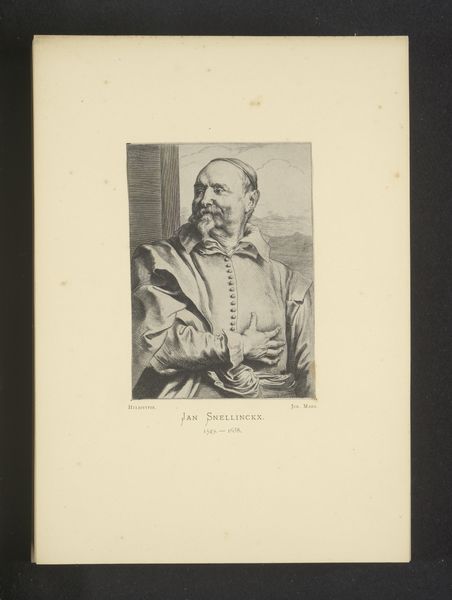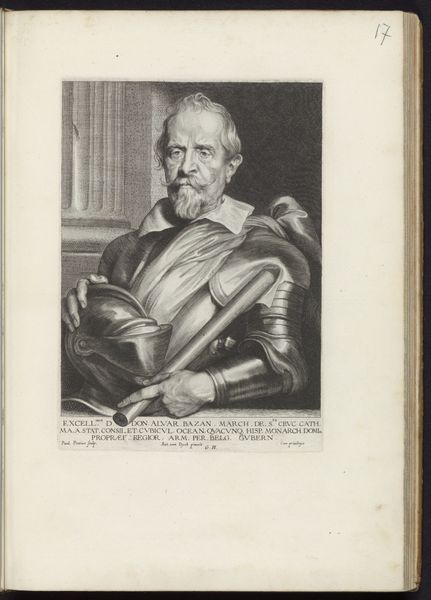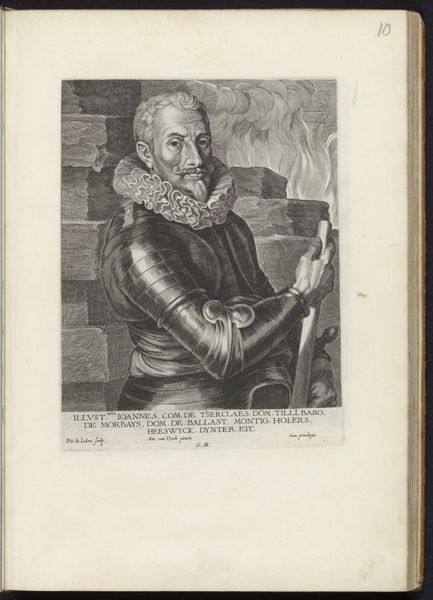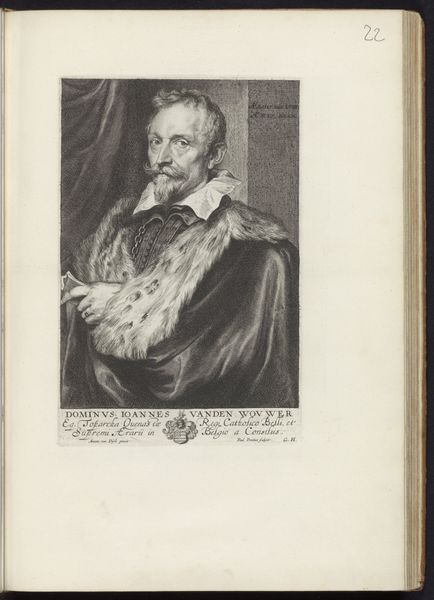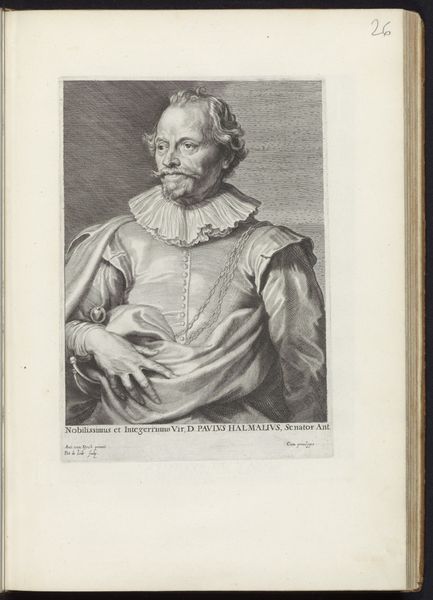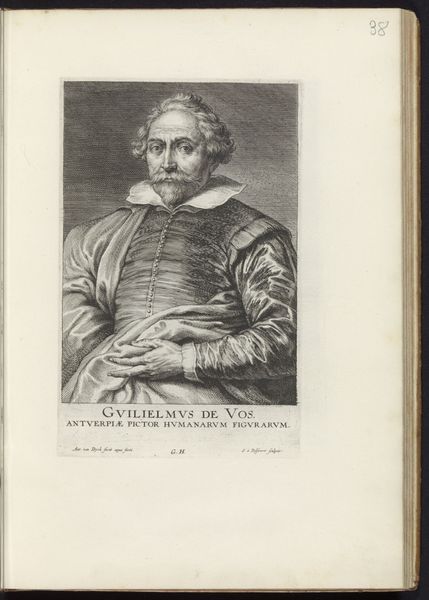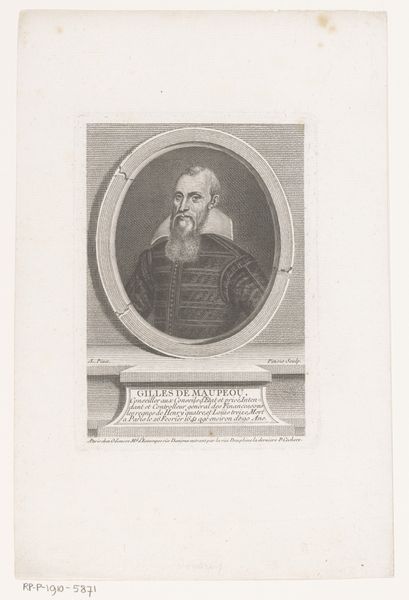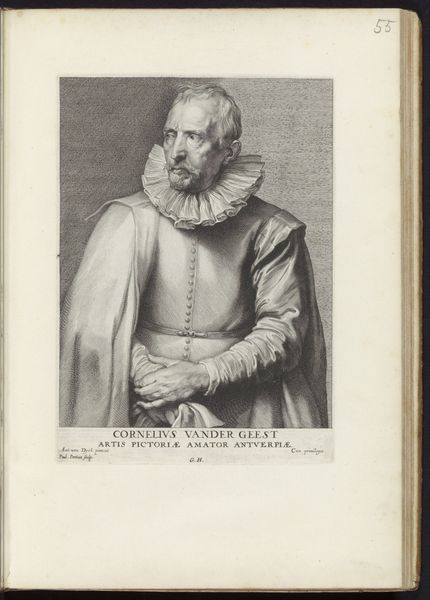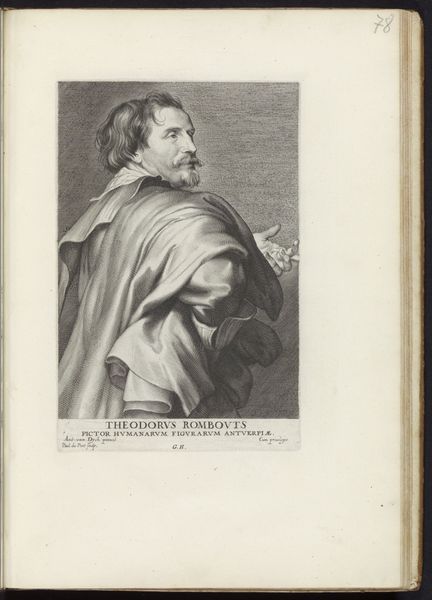
print, engraving
#
portrait
#
baroque
# print
#
old engraving style
#
history-painting
#
engraving
Dimensions: height 232 mm, width 155 mm
Copyright: Rijks Museum: Open Domain
Curator: This is "Portret van de schilder Jan Snellinck," or "Portrait of the Painter Jan Snellinck," attributed to Pieter de Jode II, created sometime between 1630 and 1646. It's currently housed here at the Rijksmuseum. It is an engraving. Editor: My first impression is the intensity. The subject, Snellinck, holds his hand to his chest in a gesture that feels both personal and formal, intensified by the graphic nature of the engraving technique. Curator: That hand-to-chest gesture, coupled with his attire, would have signaled a certain social status. Engravings like these circulated widely. It provided a visual record, reinforcing hierarchies but also, perhaps, allowing for a certain degree of social mobility through imagery. Editor: Indeed. The meticulous lines of the engraving, think of the sheer labor invested in replicating this image multiple times, points to a culture deeply invested in image production. It’s not just about documentation; it’s about manufacturing prestige. Were these engravings intended to function as promotion? Curator: In a sense, yes. These kinds of prints often served as calling cards or announcements of one’s trade and skill. Also, this print specifically was added as an illustration in the book "Images of various men of genius and learning." The circulation of images like these standardized and popularized a particular vision of the artist. Editor: A vision carefully constructed and circulated. Thinking about the print as a commodity, the paper, the ink, the press—each element is carefully sourced and deployed. The relatively limited tonal range compared to painting, must also have influenced artistic trends in its day. Curator: Exactly! And consider the skill required to translate painterly effects into line. That is what sets apart different artists like Pieter de Jode II. These choices around the materials influenced artistic choices in larger, perhaps more celebrated paintings, by encouraging particular stylistic developments Editor: Looking at it this way offers such rich insights, I’m more drawn to the lines and details that capture light on Snellinck's face. You begin to imagine the original act of creation not simply an artwork but also labor to a particular artistic vision. Curator: Absolutely, shifting perspective away from mere subject and understanding the image’s origin can provide us greater understanding to how artists see themselves in the broader landscape of the art world and in relationship with their contemporary viewers.
Comments
No comments
Be the first to comment and join the conversation on the ultimate creative platform.

